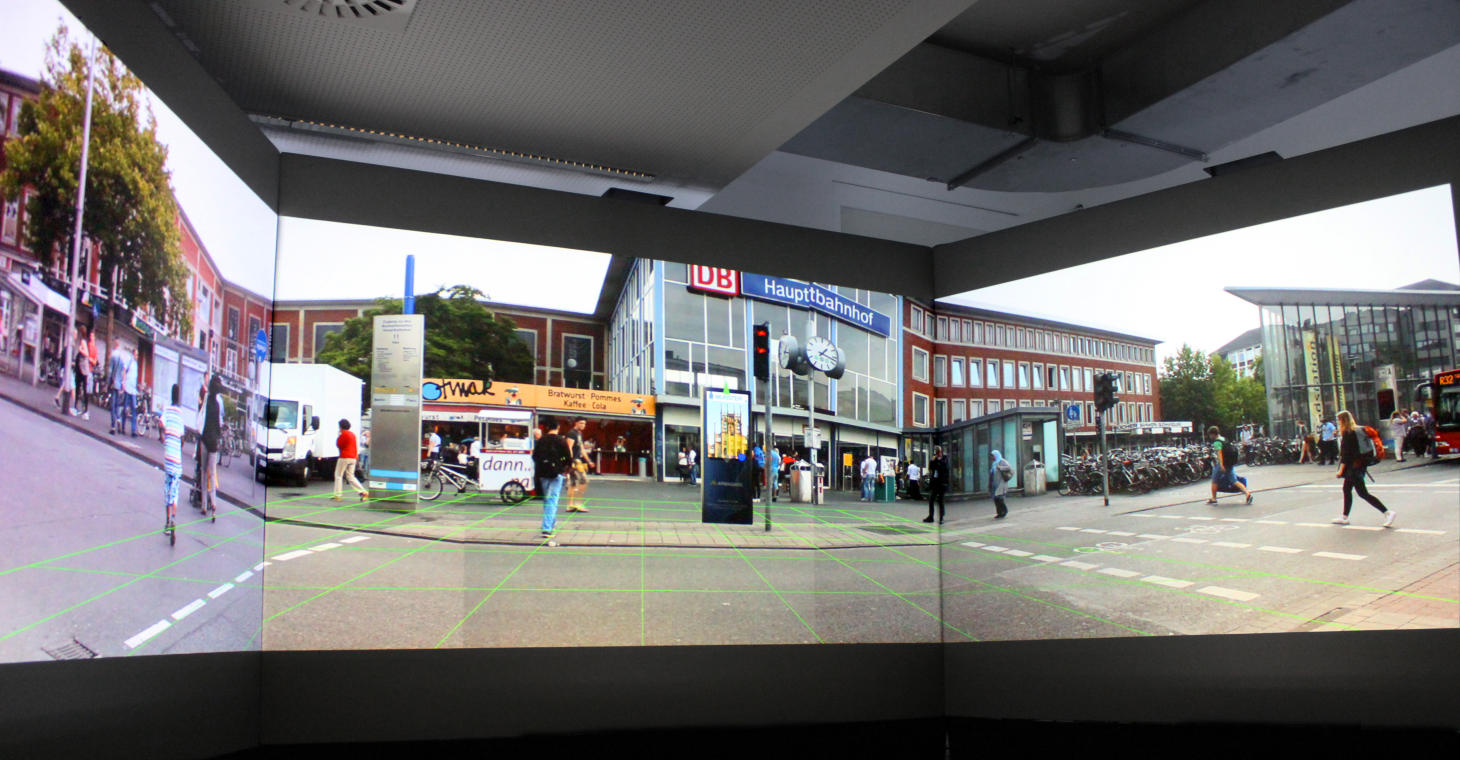The Immersive Video Environment (IVE) is the next version of the previous developed Public Display Evaluation and Design Toolkit (IPED-Toolkit), which was designed by Ostkamp and Kray [1]. The idea behind the IPED-Toolkit was to use the system for quick prototyping and evaluating of public display systems. Instead of doing it in reality, which might be very expensive, the IPED-Toolkit can be used to easily test public displays in a virtual reality. To provide a virtual reality, the IPED-Toolkit used an immersive video environment - also called CAVE system - in which a user stands in the middle of three screens as in the picture below. The screens are spatially arranged, so that the user sees the video footages in a panoramic view and feels as he would be part of the scene. This is the reason why such a system is also named immersive. During the implementation of the IPED-Toolkit, it was found out, that the system is also capable of other things, not only limited to public displays. To build a more open toolkit for research and to solve some shortcomings, the 2nd version was introduced and renamed to IVE. It is still in development and does currently not cover all features of the IPED-Toolkit. Please find more details and information about the software architecture and the used data models in the project documention: https://sitcomlab.github.io/IVE/.
https://www.youtube.com/embed/0iaOFMc1ptU?rel=0
Please follow the steps of the project documentation: https://sitcomlab.github.io/IVE/install/




